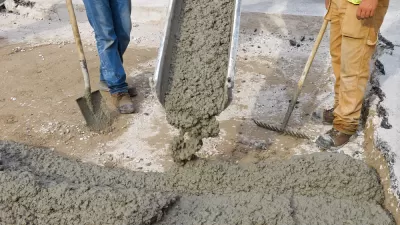Google announced last week it plans to expand high speed internet service in four fiber-ready cities, including Nashville, Atlanta, Charlotte, and Raleigh-Durham.
Running at gigabit speeds, Google claims its service is 100 times faster than typical broadband service, and available at a competitive price. Google began its fiber venture in 2010, and now serves three metropolitan areas: Provo, Austin, and Kansas City. The four southeastern announced this week are next in line, and the company is currently studying Phoenix, Portland, San Jose, Salt Lake City and San Antonio for future expansion.
A timeline is not available yet, though the company is asking local residents to verify addresses on its dedicated fiber web site, which will help with infrastructure planning.
Google’s hesitancy in announcing project completion date is understandable, as utility infrastructure can become technically and politically complex, especially when navigating multiple jurisdictions. Google notes on its web site that construction work will involve 'stringing and laying,' which refers to both an aerial and underground configuration. Many U.S. cities ban new overhead wiring for aesthetic and reliability reasons, and yet utilities can often work around this limitation if activities are classified as maintenance-related.
Whether Google can take advantage of similar loopholes and join existing telecommunications utilities on increasing crowded utility poles remains to be seen. Burying cable underground is much more costly than overhead, and often prohibitively expense over long distances. And yet the cost-effective overhead option could also be risky, as splicing fiber cables to accommodate redevelopment can degrade transmission speed over time.
Splicing fiber is also more difficult and expensive than traditional copper cable as is common in electrical wiring. In many cases property owners face high costs if relocation of aerial utilities is required for certain development activity, which is a common strategy for improving road corridors.
FULL STORY: Google Expanding High-Speed Internet to Four Southeastern Cities

Planetizen Federal Action Tracker
A weekly monitor of how Trump’s orders and actions are impacting planners and planning in America.

Congressman Proposes Bill to Rename DC Metro “Trump Train”
The Make Autorail Great Again Act would withhold federal funding to the system until the Washington Metropolitan Area Transit Authority (WMATA), rebrands as the Washington Metropolitan Authority for Greater Access (WMAGA).

The Simple Legislative Tool Transforming Vacant Downtowns
In California, Michigan and Georgia, an easy win is bringing dollars — and delight — back to city centers.

The States Losing Rural Delivery Rooms at an Alarming Pace
In some states, as few as 9% of rural hospitals still deliver babies. As a result, rising pre-term births, no adequate pre-term care and "harrowing" close calls are a growing reality.

The Small South Asian Republic Going all in on EVs
Thanks to one simple policy change less than five years ago, 65% of new cars in this Himalayan country are now electric.

DC Backpedals on Bike Lane Protection, Swaps Barriers for Paint
Citing aesthetic concerns, the city is removing the concrete barriers and flexposts that once separated Arizona Avenue cyclists from motor vehicles.
Urban Design for Planners 1: Software Tools
This six-course series explores essential urban design concepts using open source software and equips planners with the tools they need to participate fully in the urban design process.
Planning for Universal Design
Learn the tools for implementing Universal Design in planning regulations.
Smith Gee Studio
City of Charlotte
City of Camden Redevelopment Agency
City of Astoria
Transportation Research & Education Center (TREC) at Portland State University
US High Speed Rail Association
City of Camden Redevelopment Agency
Municipality of Princeton (NJ)





























